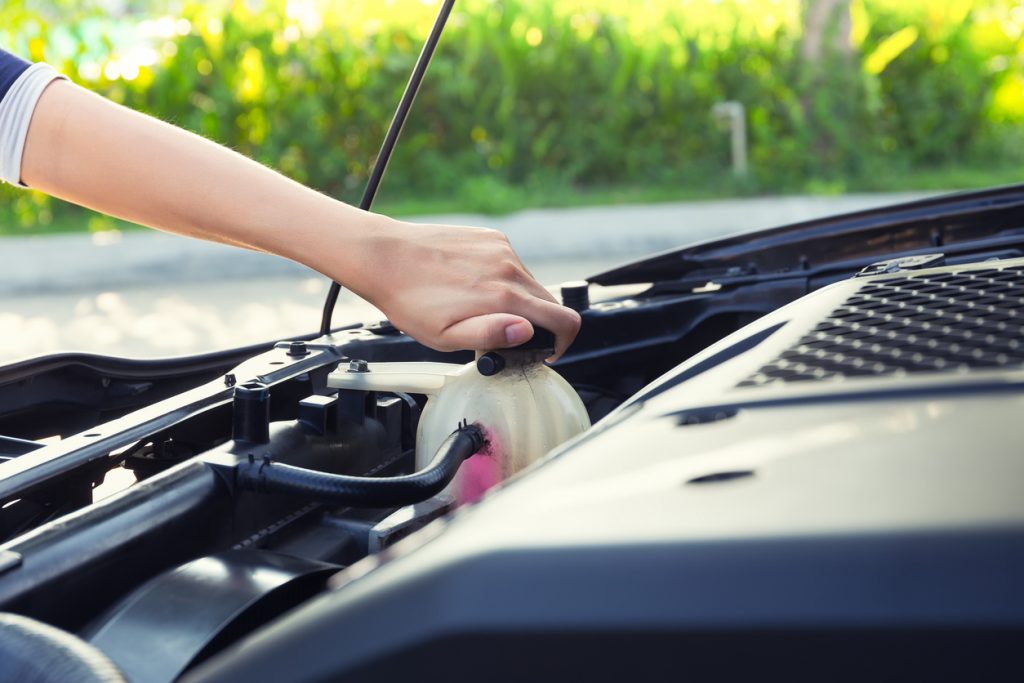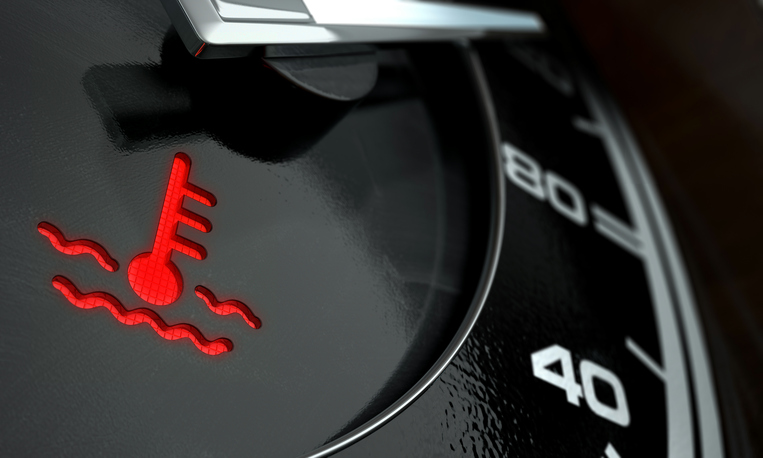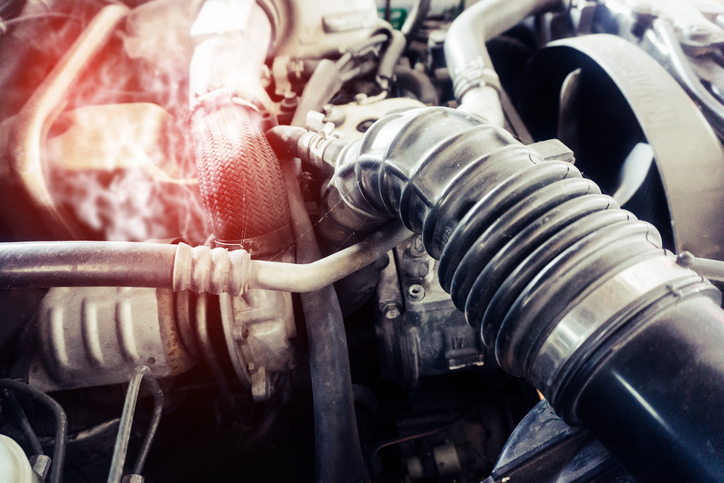Coolant/antifreeze is the most important fluid under the bonnet, maintaining the temperature of the engine to prevent overheating. But what happens to a car when there’s no coolant in the system?
If you’ve noticed that the coolant level is low or there’s a warning light on the dashboard, you may be wondering what to do. Is it safe to continue driving? How long can a car last without coolant? And how much coolant loss is normal as part of day-to-day use?
These are all questions that we’ll cover in our guide. Use the links below to quickly find the help you need or keep reading for a full breakdown of what you need to know about low coolant, and how it can affect your car.
In this guide, we’ll look at:
- What happens to an engine with no coolant
- How long can a car last without coolant?
- How modern engines deal with low coolant and overheating
- How much coolant loss is normal?
- Warning signs of low coolant
Use the links to navigate to the section you need or read on for the complete guide.
Blog Sign Up
"*" indicates required fields
What happens to an engine with no coolant?
Coolant/antifreeze circulates through the engine, maintaining the correct working temperature of different components. If your car runs out of coolant on the road, you’ll likely experience the following:
Dashboard warning light or abnormal temperature gauge
The first sign of low coolant should be a dashboard warning light, or a rising temperature gauge.
This is typically a red symbol depicting a thermometer. It may flash or stay steady on depending on the type of fault, but in either case you should pull over, check the temperature gauge, and avoid driving on if the engine is working above its recommended temperature.
Automatic engine cut-off
If you drive a modern car, it will be fitted with an automatic engine cut-off feature. This is designed to prevent damage when the engine starts to heat up due to lack of coolant. You won’t be able to drive the car further until it’s cooled down.
Damage to engine parts
If your car doesn’t have a cut-off feature and you continue driving, you’ll risk damaging parts of the engine that are running too hot. This may not only lead to pricey repair bills, but could result in permanent and irreparable damage.
The parts of your car that can be affected by overheating failure include:
- Water pump
- Head gasket
- Cylinder and piston timing
- Cylinder head
- Warped or bent connector rods
- Crank failure
Other symptoms of low or no coolant
Aside from the mechanical engine issues caused by low to no coolant, you could notice other problems such as billowing steam, a dangerously hot bonnet and no control over the interior heating system. if you notice any of these, pull over to try and prevent even more damage.
How long can a car last without coolant?
You won’t get far without coolant. After a few miles, the engine will start overheating if so, and may automatically cut off to protect internal components from heat damage. If it doesn’t have this safeguard, you risk serious engine damage if you continue driving.
So, what can you do if you find yourself stranded at the roadside with no coolant and an overheating engine?
The recommended thing to do is to pull over and call your breakdown provider. They may be able to fix the problem at the roadside and can top your car up with a fresh batch of compatible coolant.
If you don’t have breakdown cover, you’ll need to wait for the engine to cool down to a safe working temperature. Opening the bonnet can help with this – but be careful as it may be extremely hot to touch.
Once things have cooled down, you can try adding water to the cooling system. This might be enough to get you home or to a nearby garage, but it’s important to flush it out and replace with quality coolant/antifreeze at your first opportunity.
If you have a leak in the cooling system, though, even water won’t save you. You’ll need to call for emergency assistance should your car continues to overheat even after being filled up with water.
How modern engines deal with low coolant and overheating
Running out of coolant/antifreeze won’t necessarily cause instant damage though, depending on your car. In modern, high-end cars, the engine control unit (ECU) often features a safe/limp-home mode, which reduces the risk of damage by firing cylinders in a different sequence. This means that cool air from the inlet is fed into one bank of cylinders at a time, allowing the other rack to cool slightly between firing. This gives the option of driving further even when the engine is overheating, which could be enough to get home or to a garage.
As well as this, many new cars feature automatic cut-off, which is designed to protect the engine from heat damage. This uses the cooling system’s thermostat to kill power to the engine when the temperature reaches a certain point, and means that the car can’t be restarted until it has cooled down sufficiently.
Not sure if your engine has these features? Your manual should provide more information. Alternatively, we’d recommend reaching out to the relevant owner’s club or forum, as they tend to cover more niche topics and may be able to help with your query.
How much coolant loss is normal?
It may surprise you to learn that some loss of coolant from the reservoir is normal. We call this ‘acceptable loss’ and it’s generally caused by minor evaporation from the cooling system.
On average, the coolant level can drop by around 0.25% every four months in normal conditions and without the presence of any faults. This is due to evaporation caused by prolonged exposure to extreme temperatures.
That might not sound like much, but over a five or ten-year cycle, those losses can add up. That’s why it’s so important to continuously check the level and condition of your car’s coolant, so you’re always aware of any naturally occurring or fault-related losses.
Warning signs of low coolant
Before your car’s engine starts taking heat damage or cuts out, there are several warning signs that can alert you to a cooling system fault. It’s important to be able to recognise these signs as, depending on the age and condition your car, the engine may sustain damage before the dashboard warning light comes on.
Common warning signs to look out for include:
High-temperature gauge creeping towards the red
Drive your car for long enough, and you’ll become familiar with where the temperature gauge should sit when everything’s ok. If the needle begins to creep towards the red, this is your first indicator that there’s something wrong with the cooling system. If you see the gauge move, pull over and pop the bonnet. This will not only cool the engine before it sustains damage, but will allow you to begin diagnosing the problem – whether it’s something simple like a leaf blocking the radiator air intake or a serious coolant leak.
Heater not working or blowing constant hot air
Your car’s heater uses the same residual heat which is collected from the engine by the cooling system. So, in the event of a fault, you may notice things going wrong with the internal heating system. This can either be a complete lack of heat or a constant flow of hot air (even on cold); either way, it won’t be pleasant, and could be warning you about a larger problem beneath the bonnet.
Poor fuel economy
When your car engine runs at the right temperature, fuel can burn efficiently keeping consumption low. As the engine temperature changes, fuel can’t burn as effectively, increasing emissions from the exhaust. If you notice a dip in recorded MPG, check your coolant level and watch the temperature gauge for signs of overheating.
A sweet smell
Coolant/antifreeze has a distinct, sweet odour. If it leaks out of the cooling system, you may be able to smell it in the cabin, particularly if the engine is hot.
Being able to recognise different engine fluid odours is a good way to diagnose potential problems quickly without your car sustaining significant damage. [link to leaks blog]
Coolant dashboard light
The engine coolant light normally appears as a thermometer with a series of wavy lines next to it, illuminated in red. This shows that the engine has reached its temperature limit, and you should pull over.
Normally, a low coolant level is caused by a leak, so you should try to locate its source. If it’s only small, you may be able to refill the reservoir and continue driving to a safe location without losing much fluid.
Fill your cooling system with Prestone Coolant/Antifreeze, and your car will be protected from extreme temperatures from -37°C to 129°C – so you don’t need to worry about corrosion, frost or overheating. For more information and advice, visit the Prestone homepage.



